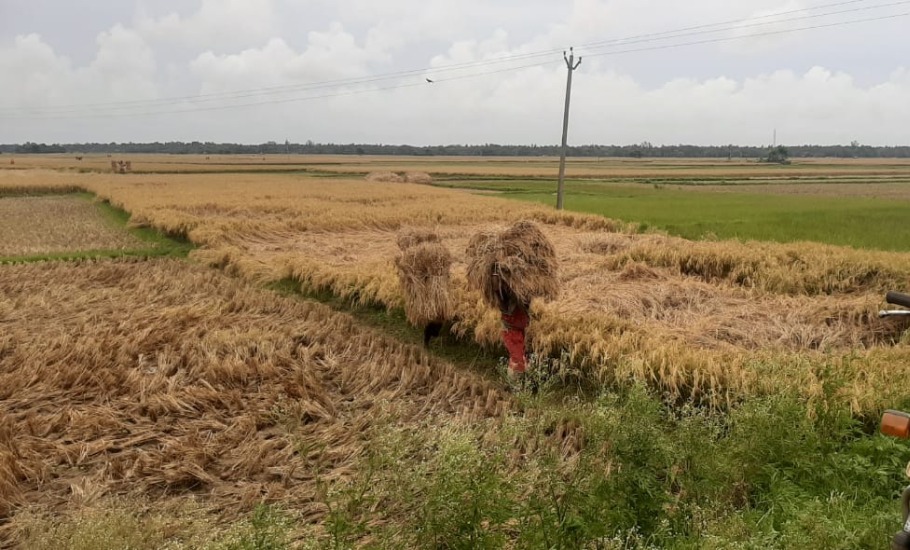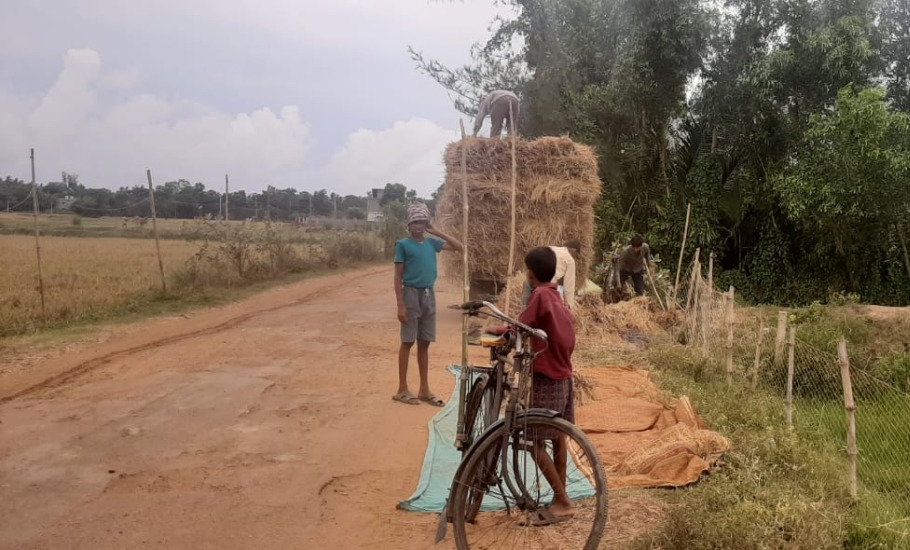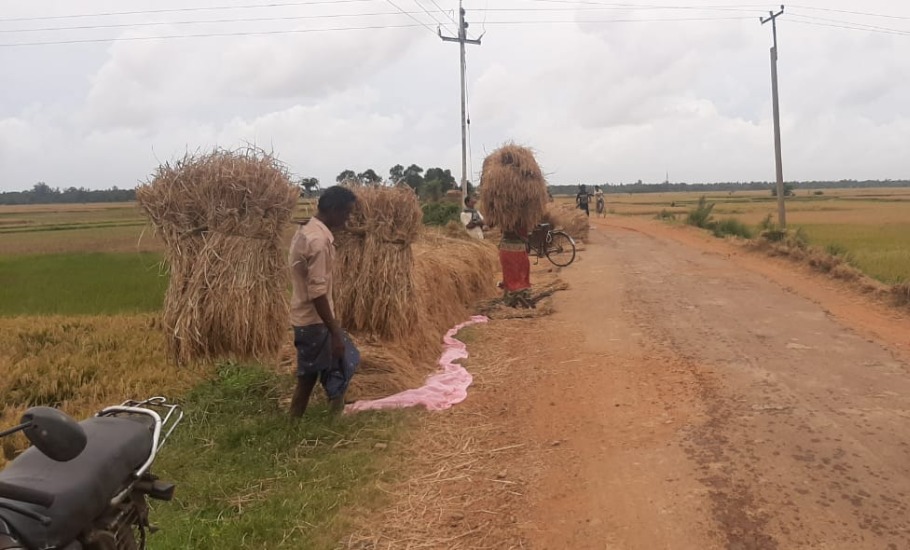
With experience, north Odisha braces for cyclone Amphan landfall
As Odisha braces for cyclone Amphan, a sense of fear and apprehension has gripped the residents of Badhapal village in Baliapal block of Balasore district. Though Odisha is frequented by cyclones, it has been 21 years since the coastal state experienced its first and the deadliest super cyclone of the twentieth century, in 1999.

As Odisha braces for cyclone Amphan, a sense of fear and apprehension has gripped the residents of Badhapal village in Baliapal block of Balasore district.
From being a super cyclone, Amphan weakened into an extremely severe cyclonic storm on Tuesday. It is expected to make landfall in the afternoon or evening of May 20 between Digha in West Bengal and Hatia islands in Bangladesh.
Though Odisha is frequented by cyclones, it has been 21 years since the coastal state experienced its first and the deadliest super cyclone of the twentieth century, in 1999.
Home to approximately 200 families, Badhapal, is around 30-35 kms from Digha beach in West Bengal. Chandaneswar town, Odisha and Balasore’s last point before entering West Bengal, is roughly 28 kms from this village.
Badhapal, as its residents say, is a flood prone village. “Every year, many villages in different panchayats of our block experience flood,” says a resident. “Though we had been affected by the 1999 super cyclone, not many have much experience of the horrors of wind. Naturally, everyone is scared here,” adds Subasini Das, 75, of Badhapal.
Barely a few kilometres away, residents in different sea-hugging panchayats – Chaumukh, Dagara, Betagadia, Aladiha, Nuagan and Jambhirai – are even more terrified.
“Like others, I got potatoes and candles. Many of us have LED lanterns and torches,” says a resident in Chaumukh village. Most of them grow paddy twice a year, many are into fishing as well.
According to Abanti Mohanty, sarpanch of Dagara panchayat, the local families have gathered essential commodities in advance. They have rice at home; almost every house has stored muri (puffed rice) that they eat in breakfast and afternoons.

Mohanty informs as many as 520 people had their lunch on Tuesday at the five government-run cyclone shelters – mostly school buildings – in her panchayat. By 5 pm, the number of people at these shelters had increased to 1,050 and it’s likely to go up to 1,200 by the night. She claims diesel generator sets have also been installed in all the cyclone shelters. “These are tough times, sir. We have to ensure that people maintain social distancing norms.”
Dagara and Chaumukh panchayats have been declared red zones for cyclone Amphan. Managing cyclones is always a daunting task. However, in the middle of a pandemic, the job is even more difficult.
It drizzled in the morning in many parts across Odisha. However, post 4 pm, according to the people in Balasore, it started raining.
In Shankarpur village of Bhadrak district’s Tihidi block, Prahlad Nayak, 37, and his five brothers, all visibly tired, are having a cup of tea with muri. It’s not difficult to notice the mud spots dotting their body. They are all farmers.
Related news: Cyclone Amphan: NDRF deploys 41 teams in West Bengal, Odisha
Like Prahlad, farmers in different villages have tried to carry their produce from the field; some in cycles, many on bikes and most on shoulders. A few, the richer among them, even hired autorickshaws for the job.
On Tuesday, Prahlad and his brothers worked in their field from morning till 4 in the afternoon. They are planning what are the jobs they can complete the next morning, before the rain intensifies. “Cyclone Bulbul had damaged our main crop, paddy, last year. The unseasonal rains in March this year completely devastated the vegetable plants,” he says, adding, “Amphan pain kaana baaki achhi (What’s left for Amphan to destroy)?”
A stamp of sadness laced with frustration is written large on his face. His brothers, mainly the younger ones, Muna and Santosh, try to build confidence in Prahlad. “Don’t bother. We will try our best, and see how best we can harvest next time,” says Muna; his eyes fixed on the new mobile handset that Santosh had purchased last week.

A few steps away from his house, Muna says, “We, the younger brothers can’t look eye to eye with our brother. We are scared of him. After we lost our father over a decade ago, bada bhai (elder brother) has been more than a father figure for us.” He, however, quickly adds, “What’s the point in feeling bad? Can we stop the whims of nature?”
Port town Dhamra is just 30 minutes away from Shankarpur, nestled on the Bhadrak-Dhamra road. Bhadrak was carved as a separate district out of Balasore in 1993. Bhadrak and Balasore and minerals-rich Mayurbhanj and Keonjhar (all in northern Odisha) are likely to witness the fury of Amphan. Other coastal districts will be hit, but the degree is expected to be lesser.
“Cyclone Amphan in the midst of COVID-19 pandemic has thrown a huge challenge before us. It has put the Panchayati Raj system, with its limited resources, skill set and manpower, under tremendous pressure. It’s a big test,” thinks well-known activist Jagadananda.
However, he is optimistic that Odisha, given its past records of successful cyclone management, will stand up to the occasion, well. “We will overcome the challenge,” he adds.
The entire state prays for that.
(The author is a Odisha-based journalist)

